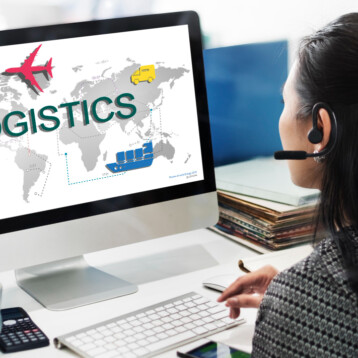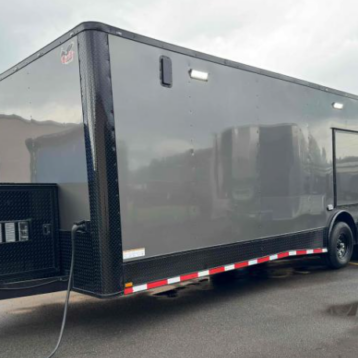
Although the behemoth that is Uber continues to rule the world of ridesharing, this market dominance hasn’t stopped them expanding their offerings in fascinating and troubling ways. From delivering food to its autonomous driving unit, the company has long been about a lot more than just its ride-hailing service. And Uber has certainly reaped the rewards for their audacity—UberEats alone is worth up to $20 billion.
One venture that has perhaps gone under the radar is Uber Freight. Launched in the US in 2016, the platform allows shippers and truckers to find one another through an online marketplace, following in the footsteps of other digital freight brokerage companies like Convoy, Transfix, and Trucker Path. By facilitating freight matching through an app, in a similar style to their ridesharing system, Uber Freight is intended to simplify the freighting procurement process.
Yet, by mid-2018, there were concerns that the service was going the same way as UberRush, the company’s ill-fated courier platform, which shut down after just four years. Uber Freight was experiencing underwhelming levels of uptake, leading to genuine fears that it would never catch on. Some media outlets even questioned whether Uber Freight was on the verge of folding too. So what is the truth about Uber’s latest venture?
Uber Freight or Uber Failure?
Mark Carroll, of logistics giant Descartes, contends that “freight marketplace startups are really technology-enabled brokerage firms…seeking to disintermediate traditional brokers.” Yet, most carriers were content to continue procuring business from their long-standing carriers as they always had, despite the convenience offered by platforms like Uber and its competitors. That said, a US-wide driver deficit may also have been partly to blame for Uber Freight’s early struggles, hitting a peak of 60,800 in 2018.
The story was similar for shippers. Unlike Uber’s ride-hailing service, where most customers are prepared to ride with pretty much any driver with a high enough rating, shippers are understandably a lot pickier, and have a closed network of trusted drivers on whom they can rely. As such, shippers will generally only seek alternatives when their preferred vendors are unavailable. All of this left Uber Freight facing something of an uphill battle after its launch.
How did Uber Freight’s fortunes change?
However, Uber Freight has since turned things around. As of September 2019, the platform has built up a network of 50,000 carriers and over ten times as many trucks, racking up a total of more than one million downloads. These numbers are even more impressive when compared to equivalent stats from Uber Freight’s main rival, Convoy, which only works with around 35,000 carriers, 100,00 truckers, and 500 shippers. Things have been going so well that the company announced in March 2019 that they would be expanding into Europe.
A large part of this turnaround is down to the program being updated to be more easily integrated into existing networks and platforms. Shippers are now able to use Uber Freight within their existing enterprise resource planning software, specifically SAP Logistics Business Network. This is a logistics management platform that connects different players in a supply chain, facilitating inter-company collaboration.
Before SAP, shippers were forced to use multiple means of procuring carriers—these individual services being referred to as “island” procurement tools within the business. As SAP recruiters Eursap explain, this leads to duplicate or inconsistent data, jeopardising the reliability of their decisions. With SAP claiming to touch 77% of the world’s transactions, the partnership between these companies immediately introduced a swathe of new shippers to Uber Freight.
This initiative has increased Uber Freight’s visibility among shippers, while ensuring that all data concerning freighting decisions remains in one place. By incorporating viable shipping alternatives into existing processes, shippers have become more willing to procure the services of carriers outside of their traditional networks, which includes using Uber Freight as a broker. And with industry commentators lauding features like dynamic scheduling, route optimisation, and shipper facility data and reviews, it’s unsurprising that shippers have finally cottoned on to its value.
Of course, Uber couldn’t have made the platform a success without also attracting drivers, who have also come around to its benefits. This is thanks in no small part to Uber A lot of this owes to Uber’s decision to offer incentives for new customers. For instance, drivers who use Uber Freight are eligible for discounts on fuel, tires, maintenance, and the purchase of various vehicles under agreements struck with different service providers. Throw in features like upfront pricing and instant payment, and it’s clear to see why more drivers are starting to use the platform.
Despite concerns that Uber Freight was doomed to fail, the platform has slowly found its way to success. With its proposed global expansion and analysts like Morgan Stanley tipping the app to disrupt established logistics players like Landstar, don’t be surprised to see Uber Freight become a heavyweight in the world of freight.










